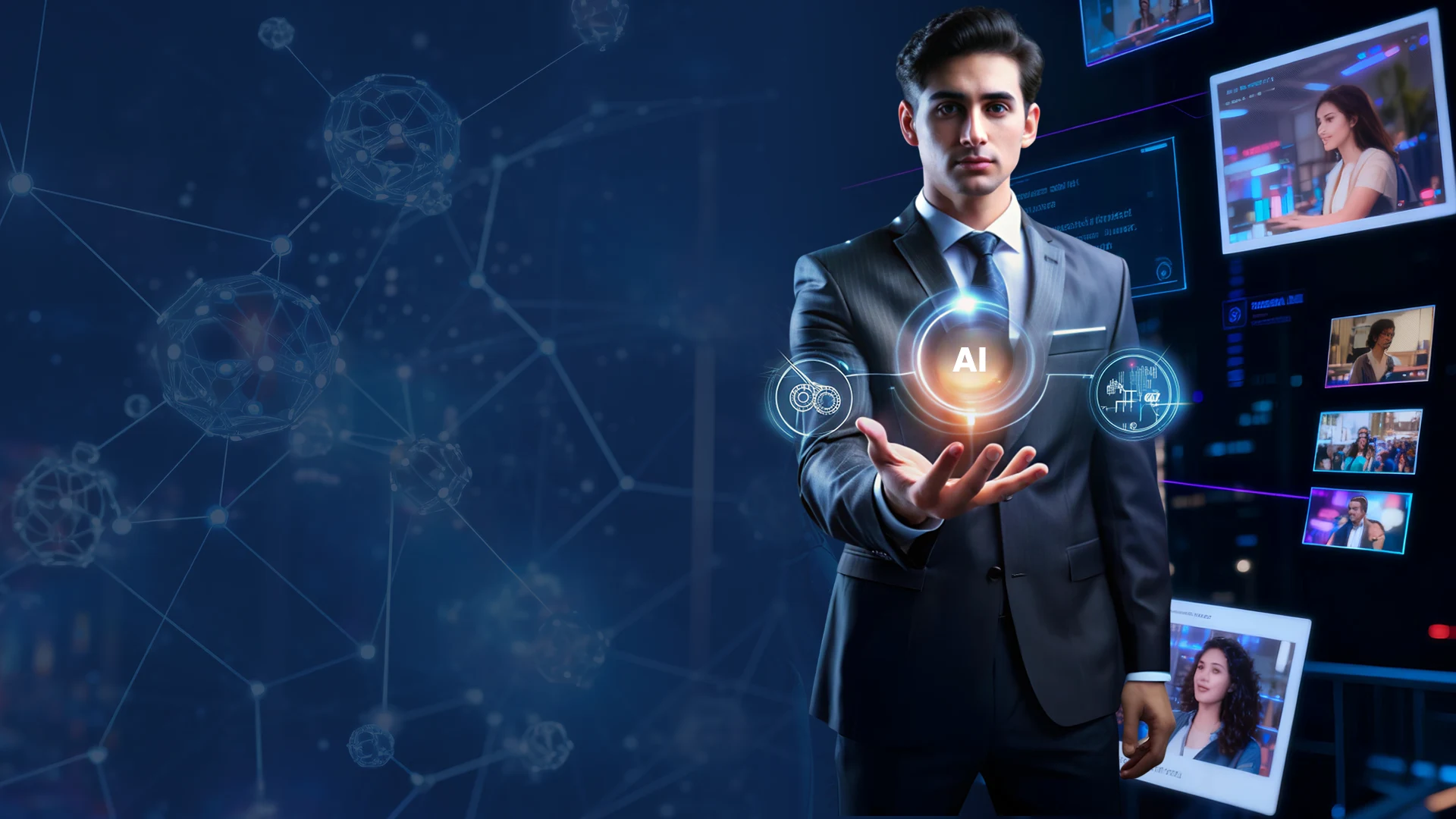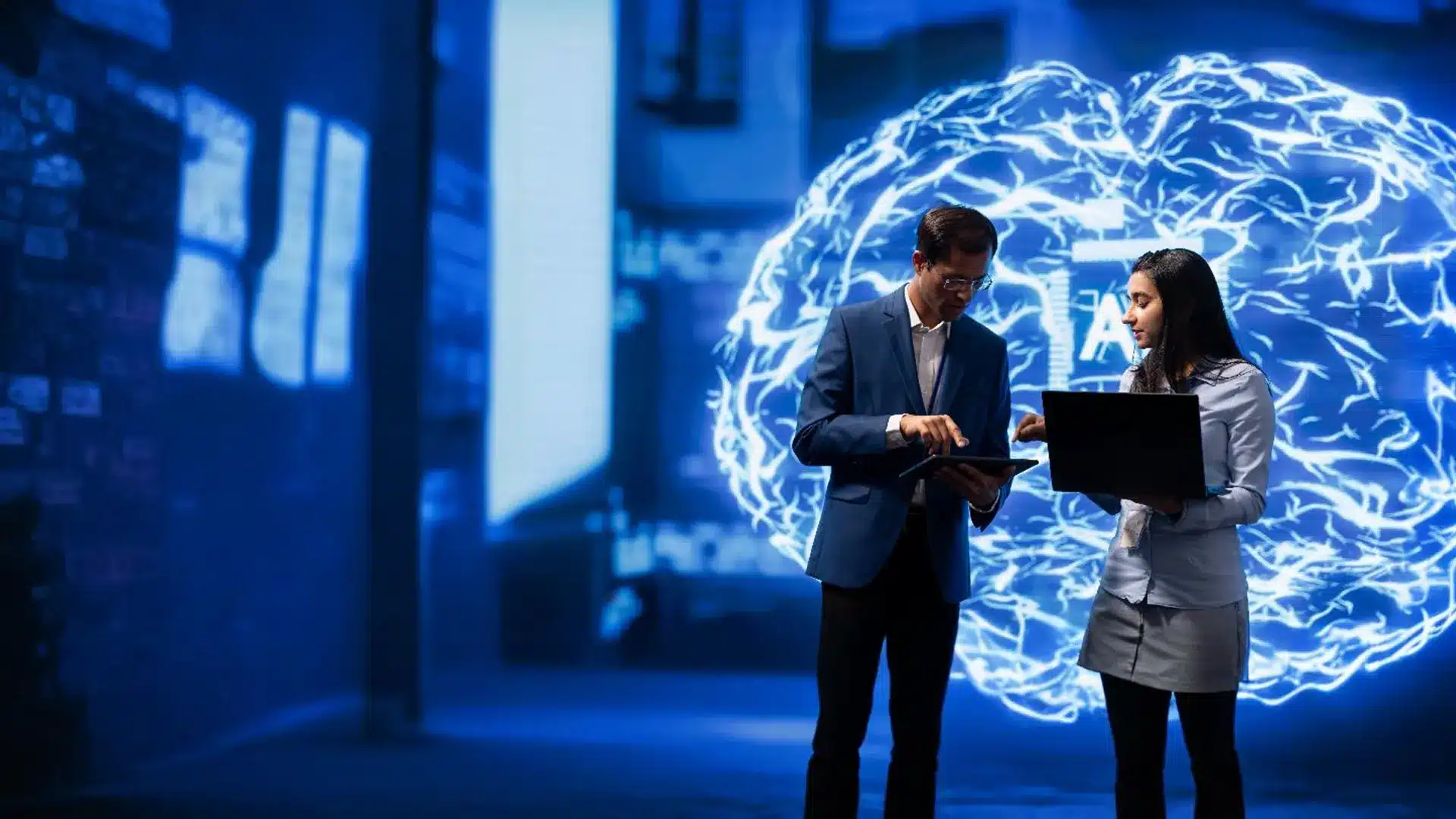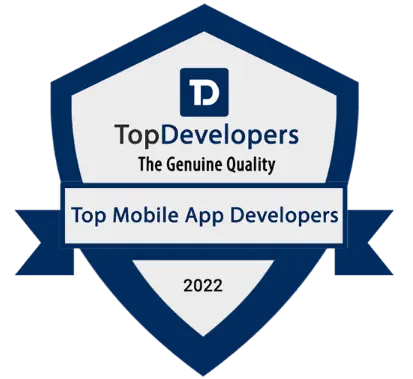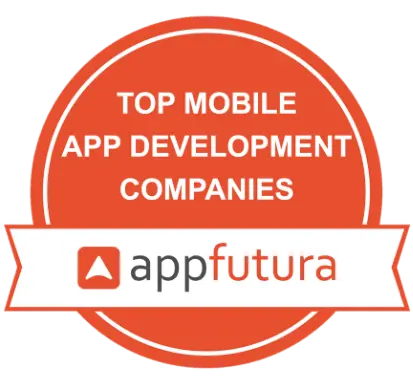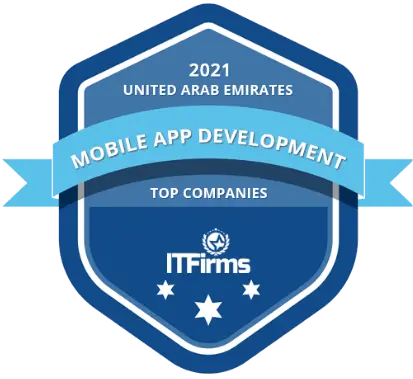Technology has always been about making things more advanced & convenient for people, and AI seems to be leaving no stone unturned in redefining everything happening in the surroundings. Multimodal AI use cases in different industries have made things easier as its core competencies allow users to interact with the AI model via different input formats, including texts, images, videos, audios, and much more.
According to Grand View Research, the global multimodal AI market size had a valuation of $1.73 billion in 2024, which is expected to grow with a significant CAGR of 36.8% to achieve the valuation of $10.89 billion by 2030. Multimodal AI applications comprise various distinguished technologies like sensory inputs, natural language processing, computer vision, and much more, which makes it a versatile option across industries to perform tasks of different natures.
From automating the vehicle control system to assisting in serious medical surgeries, the efficiency, precision, accuracy, and reliability of multimodal AI have only increased over time. If you are also a business owner looking to embrace AI in a form that works flexibly across operations, having a glance through multimodal AI examples can make things clear for you. Thus, in this blog, we will be talking all about multimodal AI, how it works, the best applications of this burgeoning technology, and much more.
What is MultiModal AI?
Multimodal AI is the machine learning model which are designed to process information available in different formats, including texts, audio, images, videos, and much more. While the traditional AI models are curated to interact in a specific data format, multimodal AI solutions are capable of taking input and providing input in variations, bringing versatility in their use cases.
At the same time, multimodal AI applications assess each input deeply to understand even the minute details of the given data. Therefore, it becomes easier for the AI model to produce the most relevant, accurate, and useful outputs for the users. For instance, when given a picture of the landscape, the multimodal AI can describe all the elements, scenarios, and subjects shown in the picture.
The multimodal AI examples include Dall-e, and GPT-4 which focuses on streamlining the interaction between user and computer by establishing a more natural way of conversation. Whether it is image recognition, language translation, or even speech recognition, multimodal AI use cases do it all.
How Does Multimodal AI Work?
The working mechanism of multimodal AI is all about integrating and processing the different types of data to create a unified model that can use the strengths of different modalities while overcoming their individual limitations. For instance, an image recognition model should work in collaboration with the other models integrated into the system, while not just focusing on their individual responsibility. Let’s have a better understanding by breaking the entire process into multiple steps-
1. Data Processing
The working process begins with a multimodal AI system collecting all the required information and data from the different defined sources, including documents, videos, images, texts, and much more. This data is then cleared by the model to ensure that it will be well structured for an efficient analysis.
2. Feature Execution
As interpreted in the earlier section, multimodal AI use cases are the contribution of different modalities playing their particular role. Therefore, this step is dedicated to each modality executing its core feature. For instance, the natural language processing model will be assessing the text inputs offered by the user, while the computer vision will be analyzing image data.
3. Data Fusion
Data fusion is the method for establishing a comprehensive understanding of the input by combining different elements retrieved from various modalities in a multimodal AI architecture. There are different types of fusions that can take place in order to establish the understanding. For instance, there is early fusion that combines the raw data, and then there is late fusion that combines the processed data.
4. Data Retrieval
As the name suggests, in this phase, the multimodal AI application looks for the relevant data in the provided datasets and sources. The model focuses on keeping the more relevant information in the closer vector space while increasing the vector distance from the irrelevant information. It helps the model to use the best, complete, and high-quality data to curate the output.
5. Output Generation
This is practically the final phase of the model working mechanism, where it provides the output based on the input format. It includes describing a visual, providing the pertinent response to a question, identifying a speaker, translating words from a video, and much more.
6. Continuous Enhancements
The modern time AI solutions are designed to continuously learn from user interactions and new data to enhance performance over time. The mechanism ensures that the quality of response is elevated over time while the fresh and latest information is being used to curate the answers.
10 Best Multimodal AI Applications and Real-Life Use Cases
The versatility and advanced capabilities have contributed significantly to multimodal AI use cases across industries. From healthcare to finance and hospitality, multimodal AI has been helping businesses enhance their operational efficiency while offering a better experience to users. Let’s have a look at the real-time multimodal AI applications across different domains-
1. Healthcare
First of all, talking about the role of multimodal AI applications in the healthcare sector, it helps to fetch data from various sources like patient notes, past medical records, electronic health records, medical imaging, and much more. All the data is analyzed and processed with high accuracy to get a better and transparent overview of the patient’s health. The combined analysis of this data coming from different sources helps to identify the patterns that could have otherwise been ignored. Thus, it leads to a more precise diagnosis to curate the customized treatment plans.
At the same time, multimodal AI tools are even capable of closely studying the past health record and present medical conditions of the patient to identify potential diseases in the future. The ability to process multiple input formats allows the large multimodal model to extract the crucial insights from medical visuals like X-ray, CT scans, and MRI reports.
Real-Life Multimodal AI Example
Mayo Clinic, a private American academic medical center, is among the leading healthcare institutions around the world to implement multimodal applications into its operations. The healthcare center has established several partnerships to build multimodal foundation models for radiology that help in X-ray analysis. The implementation offers quick access to accurate and insightful information from medical imaging to identify the potential health risks among patients.
2. Finance
The Fintech industry has always been prone to data breach risks and lower reliability of people towards handling their finances with the help of artificial intelligence. However, multimodal AI use cases in the finance sector have focused mainly on the industry’s pain points by bestowing fraud detection and risk management systems. The advanced solutions merge different data sets, including transition logs, historic financial records, activity partners, and much more.
Thus, the multimodal AI applications are kept active to track the activity partners in real time and identify the anomalies as soon as they take place. The relevant authorities are informed in no time, while multimodal AI itself deploys the pre-defined actions to restrict the unusual activities within the system.
Moreover, multimodal AI is also highly used in trading as it can analyze the vast amount of market data to accurately predict the upcoming market movement. Thus, it can provide the right guidance to the investors to choose the best stocks and maximize their returns.
Real-Life Multimodal AI Example
The popular global financial services firm J.P. Morgan has been implementing multimodal use cases throughout its organization to innovate its digital products. For instance, the company has been using the new technologies for its trading platform LOXM, which helps to optimize the trade execution by analyzing huge amounts of data. At the same time, multimodal AI applications have also been assigned to fund managers to identify the potential biases and curate their financial strategies accordingly.
3. Manufacturing
Manufacturing companies worldwide have been leveraging multimodal AI to embrace a competitive edge in the market. The technology helps to build robust systems that help in enhancing production quality, predictive maintenance of resources, and increasing workers’ productivity. The modern manufacturing units are equipped with machinery sensors, quality control report mechanisms, and production line cameras.
Thus, a multimodal AI-powered system leverages the setup to consistently monitor the production quality and reject the defective pieces to ensure that only the finest are forwarded to supply. For the same reason, the quality control cameras are used to help keep a watch on the physical damage of the inventory.
Moreover, multimodal AI solutions can also be designed for the predictive maintenance of the machines, as they can be trained using the ideal maintenance schedules for all the mechanical resources of the organization. Therefore, as soon as there is any potential issue in the machinery or the maintenance period is approaching, it reminds the administration about the same.
Real-Life Multimodal AI Example
Bosch, an engineering and technology company based in Germany, is a great example to showcase the use of multimodal AI agents in their manufacturing operations. The company has been leveraging the technology to enable predictive maintenance. The software analyzes the audio signals, sensor data, visual inputs, and many more measures to accurately forecast the need for maintenance in the different manufacturing equipment. The strategy has contributed significantly towards reducing the downtimes in the organization while increasing the overall productivity.
4. Retail
Multimodal AI applications are highly used in the retail industry, supermarkets, and online stores. The equipment, like RFID tags, shelf cameras, and transaction records, helps to provide accurate data to AI-powered software, which can further enhance inventory management by tracking the availability of different products in real time.
At the same time, multimodal AI also helps to track the retail sales of the products in different seasons of the year. Therefore, it can accurately predict the demand of a particular product by analyzing the market factors and past records. This core competency allows the retailers to keep the right inventory in their warehouse that prevents overstocking or outstocks.
Real-Life Multimodal AI Example
Zara is a well-known fashion brand for people of all age groups. The company is always appreciated for the use of multimodal AI applications to forecast trends by analyzing social media images of youngsters and influencers. This information allows the designers at Zara to tailor the best designs that are well-received in the market.
5. Digital Networking
Most of the digital networking platforms and social media sites are now relying on multimodal AI use cases to extract and understand data from various sources, like images, texts, and video content. This data is then used by the platform to suggest more relevant content to the user according to their particular interest. The practice enhances the user experience and increases overall retention.
At the same time, multimodal AI applications have also been highly used in personalized marketing and advertising, where the advanced systems actively collect the demographic data of the users along with their preferences, purchase history, search records, and much more. Thus, the advertisement of the relevant products or services is shown to the user, which elevates the chances of a successful purchase.
Real-Life Multimodal AI Example
The biggest social media platforms like Facebook and Instagram have been using multimodal AI to actively assess the content by analyzing the different combinations of different media formats like videos, images, and texts. The analysis is carried out to detect the harmful content and ensure the user’s safety on the platform. At the same time, it also helps to understand user preferences on the platform across different media types.
6. Education
Multimodal AI has played a vital role in bringing new learning opportunities for learners in remote areas by offering seamless interaction via different media formats like videos, texts, images, and much more. For instance, the AI system helps to analyze the student’s academic records, identify the key areas of strengths & weaknesses, and thus curate the personalized learning plan that aligns with their specific pace.
At the same time, it brings multimedia-rich content, which makes education more enjoyable for the learners, that increasing overall engagement. Multimodal AI applications help students to learn about their academic concepts with the help of live pictures, augmented reality, virtual reality, etc.
Real-Life Multimodal AI Example
Stanford University has integrated multimodal AI applications to streamline various aspects of its academic research. The university focuses on curating research papers and resource development to establish a learning environment that leverages AI to augment the process and not replace the traditional means of learning.
7. eCommerce
Multimodal AI applications collect data from user interaction, past purchases, social media, and product visuals to provide a personalized customer experience. For instance, it can easily understand the demographics, interests, and preferences of the buyer and thus suggest to them the relevant products. The mechanism increases the chances of successful sales and also elevates the ticket size per customer.
At the same time, this technique is also used in smart marketing, where the multimodal AI first understands the frequent purchases of the user, their professions, and search history. Thus, it becomes easier to find the right target audience according to a particular product or service. The advertisement is shown to the right people, which reduces the marketing cost but increases the return.
Real-Life Multimodal AI Example
Amazon, the largest eCommerce platform in the world, has been using multimodal AI to combine the texts and visual data that helps to understand the customer intent more accurately. For instance, if a customer is searching for a jacket, the multimodal AI analyzes the product image to show the features like waterproof or winter.
8. Agriculture
Agriculture mostly remains an untouched industry from most of the technological advancements happening around the world. However, multimodal AI use cases have left no stone unturned to bring transformation in this domain. The modal collects the real-time information from various sources like satellite imagery, weather forecasts, and on-site sensors. This data is then used in crop health monitoring, nutrient management, and timely use of disease and pest control. Thus, it becomes easier for the farmers to make the right and quick decision.
Real-Life Multimodal AI Example
Cropin, an ag-tech company in India, has built its dedicated AI solution named Cropin Sage, powered by Google Gemini. The solution combines the information from climate data, earth observation, crop knowledge graph, and more to answer farmers’ questions about food production. Moreover, it also helps agribusinesses as well as government departments to increase yield and enhance farm operations.
9. Hospitality
Multimodal AI application in the hospitality industry allows various data formats like images, voice, and text to offer the best guest experience. For instance, it can offer personalized room settings via voice commands, streamline check-in using facial data, enhance concierge services using image-based queries, and much more. At the same time, the multimodal AI also helps to bring a predictive maintenance feature that allows the hospitality business owners to keep their properties, kitchens, and equipment up-to-date without the risk of sudden failure.
Tour operating companies have also been relying on multimodal AI examples like virtual assistants and chatbots to better understand their guest experience. Thus, they can make arrangements for hotel rooms, flight tickets, and site visits accordingly.
Real-Life Multimodal AI Example
Hilton, a renowned hotel brand, uses Connie, an AI-powered robot concierge that combines NLP and physical form to answer guests’ questions in the most natural way. From personalized markets using customer data to providing the best offers and discounts according to historical transactions, this bot is capable of everything.
10. Energy
Multimodal AI use cases in the energy sector require data collection from operational sensors, environmental reports, and geological surveys. This information is then analyzed and structured using an AI model so that energy companies can make informed decisions. It generally enhances resource management, optimizes energy production, and improves overall operational efficiency.
Real-Life Multimodal AI Example
ExxonMobil, a natural oil and gas corporation established in Texas, collects data from geological surveys and operational sensors to enhance its resource management and bring operational efficiency. With a multimodal AI application, ExxonMobil can easily predict the maintenance needs in equipment and reduce the overall costs.
Most-Used Multimodal AI Models
There are several multimodal AI applications used by billions of users every day for a range of tasks. Let’s explore the best of them-
1. GPT-4
GPT-4 is the latest version of ChatGPT (700 million weekly active users) that tech enthusiasts and professionals around the world use. However, very few of them know that the latest version is a multimodal AI model that is capable of processing commands in different formats. While the software is mostly used for text generation, it has the ability to understand and generate images, identify objects, and critically analyze various other data formats.
2. Dall-E
Just like GPT-4, Dall-E is also a product from OpenAI that can generate images by understanding the command given in text format. Dall-E combines unrelated concepts to generate images that include animals, texts, and objects. It comes with different features like a diffusion decoder that generates images with textual description, a CLIP-based architecture that encodes texts into visual representation, and a Larger Context Window that helps to curate the images from scratch.
3. ImageBind
ImageBind is a multimodal model innovated by Meta AI that has the capability to combine the range of data from six different modalities, including text, audio, video, depth, inertial measurement unit (IMU), and thermal, into a single space. Thus, it becomes possible to generate a response in any format while ensuring accuracy and efficiency.
4. Gen-2
Gen-2 is a renowned text-to-video and image-to-video AI model that is used to generate highly realistic videos on the basis of simple visual and text prompts. The diffusion-based model allows for creating context-oriented videos using the text samples and images as a guide. Gen-2 comes with an encoder that helps navigate input video into latent space and then diffuse them into the low-dimensional vectors.
5. Flamingo
Flamingo is a vision-language model by DeepMind that specializes in taking images, texts, and videos as input to generate responses in all these formats. The model brings few-shot learning, where users provide a few samples in the prompt to generate responses accordingly. The cross-attention layers incorporated in Flamingo help the LLM to fuse visuals and textual features.
Trends in Multimodal AI Applications
There are certain trends that have been the core catalyst behind the burgeoning multimodal AI use cases across the industries.
1. Unified Models
There are unified models like GPT-4 and Google Gemini that can understand as well as generate the new multimodal content using a single architecture.
2. Cross-modal Interaction
This is basically the mechanism that helps to align and fuse the data from various formats to offer a more contextual and accurate output.
3. Real-time Multimodal Processing
Some of the multimodal AI applications require the model to collect and process data in real time from different sources, like sensors and internal sources. Real-time multimodal processing makes the process seamless and well-handled.
4. Open Source and Collaboration
Innovations like Google AI and Hugging Face have been providing open-source AI tools that allow developers and researchers to explore more in the field.
Generative AI, Unimodal AI, and Multimodal AI- What’s the Difference?
You must have heard the above names every now and then, but distinguishing between all these is often too complicated. So, let’s decode the basic difference between multimodal AI, unimodal AI, and generative AI.
| Key Aspects | Multimodal AI | Unimodal AI | Generative AI |
|---|---|---|---|
| What is it? | The AI model, capable of processing multiple media formats as input or output. | The AI model, capable of processing only one type of data as input or output. | The AI model is designed to create new content and data from the provided prompt. |
| Core Competency | Comprehensive prompt understanding with rich insights | Designed to offer exclusive assistance in a specific task | Realistic content generation with high creativity |
| Use Cases | Automobile advancements, advanced surveillance, and healthcare diagnostics | Image classification, multilingual functionality, and speaker identification | Custom text generation, image production, and content creation |
| Training Requirements | The model is trained using diverse datasets with multiple data types. | A specific type of data is used to train the unimodal AI. | Generative AI needs large and diverse datasets to produce the relevant outputs. |
| Key Examples | GPT-4, Gen-2, Flamingo | ResNet, BERT | DALL-E, GPT-4 |
Advantages of Multimodal AI Applications for Businesses
The capability of multimodal AI examples to process different types of data and media formats brings a lot of benefits to businesses. For example, it becomes much easier for a business to build an AI model that can be used across departments like HR, marketing, sales, and manufacturing, as it can generate images, process texts, and produce creative videos.
Let’s explore some benefits of multimodal AI applications-
1. Versatile Technology
Multimodal AI is one of the most versatile AI technologies that works equally efficiently across domains. For example, it can help the sales professionals and HR personnel to curate formal messages. At the same time, it can help the designers to make changes in existing designs or curate new images from scratch.
2. Contextual Understanding
Multimodal AI applications are designed to analyze different inputs and thus recognize patterns. This information is then processed by the model to curate accurate results in a human-like tone that better connects to the end-user.
3. Problem Solving
As interpreted in the earlier section, multimodal AI is tailored to process inputs in different formats. Thus, it can easily understand and tackle complex challenges related to multimedia content, like diagnosing a medical condition from a visual like X-ray or CT scans.
4. Rich Interaction
Unlike unimodal AI or generative AI, multimodal AI fosters rich interaction by incorporating texts with images and videos. Thus, the user is free to interact with the bot using different media formats and mediums.
5. Creativity
The ability of multimodal AI brings more space for creative tasks like art, video editing, and content creation. From generating high-quality images from just an idea to giving an AI touch to the boring and traditional video clip, everything becomes easier with multimodal AI use cases.
Key Challenges and Mitigation Strategies for Multimodal AI Implementation
Despite the significant benefits associated with multimodal AI applications, the implementation process poses several challenges that make it hard for the developers as well as the business owners to bring about the transformation.
- First of all, it requires significant resources and huge data volumes to create a multimodal AI application, which is not available for every firm. Thus, the use of cloud computing resources is preferred as the best solution to handle multimodal AI applications.
- It is highly complicated to integrate the data from various modalities like photos, sensor measurements, and texts. The different media formats make it difficult to synchronize and analyze the data effectively. Thus, data standardization and pretreatment techniques are used to build a seamless connection between the models.
- It requires complex algorithms that can correlate different types of data from the sources. Therefore, different machine learning models like RNNs and CNNs are created.
- There is always a concern about data privacy and security to ensure the users’ reliability. Techniques like robust encryption, access controls, and data anonymization are used to mitigate the challenges.
Future of Multimodal AI
Technology never took a pause from innovation and never will. Multimodal AI use cases have made it extremely easy for businesses to work in different media formats from a single interface. However, there is still a lot to explore and embrace.
For instance, the popular multimodal AI tools are already on their way to bring programming and coding into their media types, where the software can create code to build mobile apps and websites just from a simple prompt. It will not only allow the developers to focus more on building the feature-rich application without struggling with the coding complexities, but it will also offer a wider horizon to business owners to think of creative ways of presenting their offerings in the market.
At the same time, augmented reality and virtual reality can also be a game-changing innovation where the multimodal AI will be able to create the AR/VR elements for users to explore using dedicated devices.
How Can The NineHertz Help You?
There is no doubt in the statement multimodal AI brings significant benefits to the business. However, it is highly important to understand that these benefits can only be leveraged under the technical expertise of a good artificial intelligence development company. The NineHertz carries a strong experience of technology exploration for more than 15 years.
Here are some of our core competencies that make us the best technology partner for your firm to explore multimodal AI use cases-
- We are a team of 250+ developers who excel across the AI landscape, covering multimodal AI, unimodal AI, generative AI, agentic AI, and much more. So, you can get end–to-end expertise in one place.
- We offer a free and insightful consultation session to businesses looking for multimodal AI implementation. Here, we analyze the real-time business challenges, suggest the best AI solution, estimate project cost and time, and navigate the client towards the right direction.
- Our development team consists of dedicated domain experts who help us thoroughly understand the business challenges, market gaps, and industry requirements. Thus, our development professionals build the solutions that align with real-time industry needs.
- The NineHertz ensures the complete confidentiality of all the project and client data. Thus, a non-disclosure agreement makes sure that all the information is kept confidential between the described parties.
- We offer ample maintenance and support after the deployment of the project to ensure that the final product performs seamlessly in the live environment. Our technical support also ensures instant bug mitigation, periodic updates, and the addition of new features into the solution.
Wrapping Up
Multimodal AI is the new concept of artificial intelligence that carries the capability to process information in different data formats like texts, images, and videos to create the input and output. This capability allows the new AI model to offer significant assistance to businesses coming from different industries as well as professionals belonging to different domains. However, it is still highly crucial for a business owner to connect with a good development expert to build a multimodal AI application and leverage the benefits.
So, if you are also looking to build a multimodal AI tool for your firm, The NineHertz invites you for a free consultation session to discuss ideas and take the step forward.
Frequently Asked Questions (FAQs)
What is Multimodal AI?
Answer- Multimodal AI is the new innovation in the world of artificial intelligence that allows the software to understand commands given in different formats like images, visuals, videos, and texts. The software is also capable of taking input and providing the output in all these formats.
What are the use cases of multimodal AI?
Answer- There are hundreds of multimodal AI use cases across tons of industries. Some of the most talked-about use cases are healthcare diagnostics, personalized customer experience, autonomous driving, etc.
What are the limitations of Multimodal AI?
Answer- There are certain limitations of multimodal AI applications, which include high computational costs, contextualizing cross-modal data, generalizing real-world scenarios, etc.
How much time and cost does it take to build a multimodal AI application?
Answer- Generally, it takes 4-6 months and $40,000-$200,000 to build multimodal AI applications. However, the time and costs depend on numerous factors like project complexity, team size, location of the development team, hiring model, data availability, customization, etc.
Great Together!
